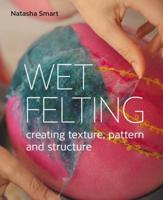Publisher's Synopsis
Description
Are you looking for a guide for building your own raised bed gardening' Then keep reading...
Raised bed gardening is a type of gardening where the dirt is framed in beds, which can be of any length or shape, however are for the most part around 3-4 feet wide. The dirt is raised over the ground and is normally encased by a casing made of wood, rock, or solid squares, and might be improved with fertilizer.
The vegetable plants in a raised bed garden are divided in geometric examples, a lot nearer together than in traditional line gardening. The dividing is with the end goal that when the vegetables are completely developed, their leaves scarcely contact one another, making a microclimate in which weed development is stifled and dampness is monitored.
Raised bed gardens are frequently the establishment of square-foot gardening, a technique for planting plants in frameworks.
Raised beds furnish the producer with an assortment of advantages. For instance, they broaden the planting season. They can likewise lessen weeds whenever structured and planted appropriately and they diminish the need to utilize poor local soil. Since the plant specialist doesn't stroll on the raised beds, the dirt isn't compacted and the roots have a simpler time developing.
Raised nursery beds are otherwise called garden boxes. They are extraordinary for developing little plots of veggies and blossoms. They help to keep pathway weeds from your nursery soil, forestall soil compaction, give great seepage and fill in as a hindrance against bugs, for example, slugs and snails. The sides of the beds keep the nursery soil from being disintegrated or washed away during overwhelming downpours. In numerous areas, plant specialists can plant prior in the season in light of the fact that the dirt is hotter and better depleted when it is over the ground level.
This book covers:
Raised Bed Gardening
Building and Planning
Everything About Soil
How to Protect Your Plants
Growing Vertically in Raised Beds
Combinations for Companion Planting
Harvesting and Storing Your Crops
Supplies and Materials
Maintaining Your Bed Raised Garden
The Proper Placement of Raised Bed Gardens
Natural Methods To Resolve Crop Infestation
A Different Kind of Bed Gardening
Over-Wintering Your Raised Beds
Going Organic
Frequently Asked Questions
...And much more!!
Raised beds are not equivalent to cultivate grower, as nursery grower are raised compartments that have bottoms to keep the dirt from dropping out. Nursery grower bottoms normally are slatted, with some sort of semi-penetrable fabric obstruction which grants waste. Raised beds, in any case, don't have bottoms and are available to the ground. This offers the advantage of allowing plant roots to go further into the ground for accessible supplements. Raised nursery beds are accessible in a wide range of materials, or they can be made without hardly lifting a finger.
Ready to get started? Click "Buy Now"!









